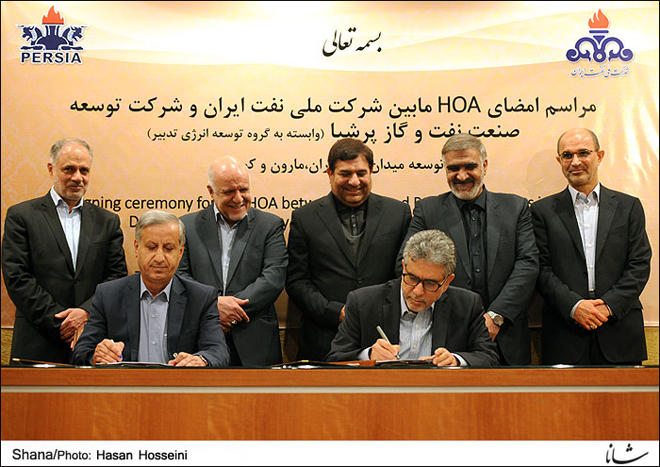Baku, Azerbaijan, Oct. 4
By Dalga Khatinoglu – Trend:
Iran signed the first heads of agreement (HOA) based on the newly designed contract model, called the Iran Petroleum Contract (IPC), with a domestic company on Oct. 4, IRNA reports.
Iran’s Oil Ministry signed a $2.2 billion worth agreement with Tadbiri Energy Group, affiliated with the Execution of Imam Khomeini's Order (EIKO), for increasing the recovery rate of three fields based on the IPC.
The HOA represents the first step on the path to a full legally binding agreement or contract, and serves as a guideline for the roles and responsibilities of the parties involved in a potential partnership before any binding documents are drawn up.
Under the Iran Petroleum Contract, Iranian companies should choose foreign partners for developing projects based on IPC. IRNA’s report, however, didn’t say anything about the contract terms.
The report said the EIKO should increase the recovery rate at the Yaran field as well as the Asmari and Bangestan layers of Kupal and Bangestan layer of Maroun fields.
Iran has developed the first phase of the North Yaran field by 89 percent and production of 30,000 barrels per day (b/d) of oil from this field will start in coming months. At South Yaran, Iran produces 5,000 b/d of oil and plans to double that figure in the framework of the first phase.
Iran prioritizes the development of West Karoon block, including North and South Azadegan, Yadavaran and North and South Yaran fields, with 64 billion barrels of in-situ oil reserves, which currently share about 6 percent of the country's total crude oil production.
All of the mentioned fields are joint ones with Iraq.
Iran also produces 94,000 b/d of oil from the Kupal field.
During the sanctions period, which started in 2012, Iran’s oil production decreased from 3.7 million barrels per day (mb/d) to around 2.8 mb/d, but the figure reached 3.65 mb/d during the post sanctions period, which started in January 2016.
Iran needs about $62 billion of investment in energy sector annually from 2015 to 2025, including in up/mid/downstream and energy optimizing projects.
Iran plans to increase the oil output to 5.2-5.7 mb/d by developing 49 oil and gas projects in coming years.






